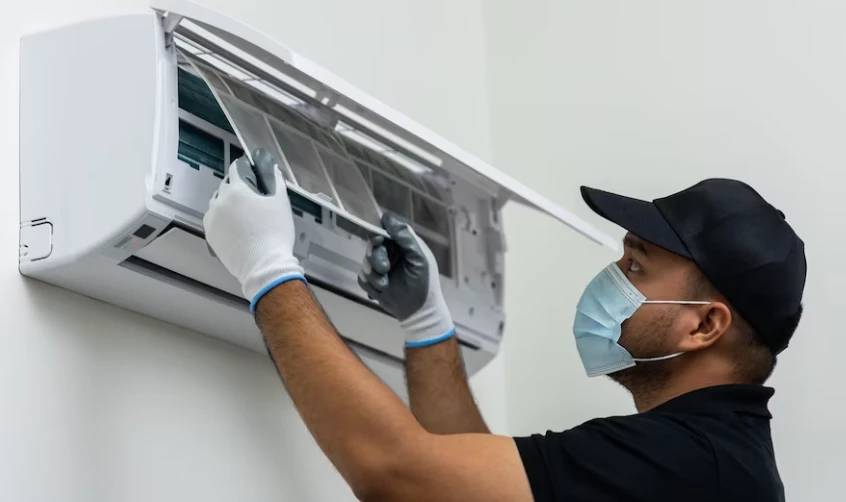Ducts had a good run. For years we treated sheet metal as the price of comfort, even while it leaked energy and ate up space. Our lives changed, but most cooling systems did not. We turned garages into gyms, finished basements, rented upstairs apartments, and carved out home offices. One-size-fits-all cooling started to struggle.
Enter ductless mini splits. They whisper instead of roar, cool the rooms you use, and fit where central systems struggle. After many early mornings around compressors and coils, I can say this with confidence: ductless is not a fad. It is a smarter, quieter, more efficient way to cool everyday spaces.
Below, see why ductless wins in real homes and real projects.
How Does Ductless Cooling Impact Energy Consumption Compared to Traditional Systems?
If central air is a floodlight, ductless is a dimmable lamp. You cool what you need, where you need it, and stop wasting energy on empty rooms.
What drives the energy advantage:
- No duct losses. Ducts in hot attics can waste 20 to 30 percent of conditioned air. Ductless sends cooling straight to the room.
- Inverter-driven compressors. Instead of cycling on and off, the system ramps to match demand. Think cruise control instead of gas and brake.
- Zoned control. Each indoor unit has its own schedule and setpoint. You stop paying to cool rooms no one is using.
- Lower fan energy. Short air paths and efficient blowers cut pressure losses.
Real-world impact:
- In a single-level home with a hot bonus room and a finished garage, one ductless head in each space cools those zones and lets the central system run less.
- In apartments and accessory dwellings, ductless often becomes the primary system and trims total use by matching output to small, variable loads.
Quick efficiency wins:
- Set zone schedules. Keep the office at 72°F during work hours and let bedrooms relax until evening.
- Use eco or dry modes during mild weather to handle humidity without heavy cooling.
- Clean filters on schedule. Airflow matters for both comfort and efficiency.
High-SEER central systems perform well, but ductless shines in older homes, add-ons, and any building with uneven loads. If energy waste is the enemy, hot-attic ductwork is the villain.
What Advancements in Ductless Technology are Driving Its Adoption in New Construction?
A decade ago, many people pictured a clunky hotel wall unit. Today’s ductless systems are compact, quiet, and design-friendly. Builders like them because they solve problems before they start.
Notable advancements:
- Cold-climate and wide operating ranges. Modern heat pumps cool in extreme heat and heat in real cold, which simplifies design in mixed climates.
- Multi-zone scalability. One outdoor unit can serve wall mounts, floor consoles, ceiling cassettes, and slim-ducted units. Designers can match the room’s look without losing efficiency.
- Lower refrigerant charge and smarter diagnostics. Tighter systems with easier setup reduce risk and ease code compliance.
- Better condensate management. Quiet pumps and smart routing make high-wall and retrofit installs cleaner and more reliable.
- Form factors that disappear. Ceiling cassettes tuck into joist bays. Short-run slim ducts can feed two rooms when a wall head is not the right fit.
Why new construction pairs well with ductless:
As insulation and air sealing improve, cooling loads drop and vary more over the day. Oversized, fixed-output equipment short cycles. Ductless modulates to meet smaller, shifting loads and keeps comfort steady.
Builder-friendly perks:
- Faster rough-ins with less space lost to trunks and plenums
- Fewer layout constraints on ceilings and walls
- Freedom to add or reconfigure zones as plans change
Ductless lets designers design and homeowners live in spaces as intended, not as ductwork dictates.
How Is Smart Home Integration Changing the Functionality of Ductless Cooling?
Ductless already delivers the right air in the right place. Smart integration adds the right time and context.
Where the smart gains show up:
- Room-by-room scheduling. Each zone follows its own routine for weekdays, weekends, bedtime, and movie nights.
- Geofencing and occupancy sensing. The system eases back when you leave and wakes up as you return. Empty rooms use less.
- Voice and app control. Simple for daily use and helpful for accessibility or caregiving.
- Energy dashboards. See which zones use the most and adjust habits, like nudging the office setpoint in the afternoon sun.
- IFTTT-style automations. Sync shades, fans, and lights to cut solar gain and reduce compressor work.
Small automations, big wins:
- When the front door locks after 8 a.m., the living room shifts to eco until late afternoon.
- If humidity tops 55 percent, switch to dry mode for 30 minutes, then return to the schedule.
- During peak utility hours, glide the setpoint up a degree and cue ceiling fans to hold comfort with less energy.
There is also a wellness boost. Quiet, zoned bedrooms hold steady all night, which helps sleep and mornings.
What Makes Ductless Systems a Key Part of Future Sustainable Building Standards?
Sustainable standards reward lower energy use, grid-friendly performance, and electrification. Ductless checks all three.
Why ductless aligns with green goals:
- Electrification-friendly. Heat pump mini splits remove on-site combustion and sync with cleaner grids as renewables grow.
- Demand flexibility. Inverters ramp smoothly, which helps utilities reduce peaks.
- Right-sizing by design. Zoning avoids oversizing and modulation prevents short cycling.
- Lower embodied infrastructure. Less sheet metal means fewer materials, especially helpful in retrofits.
- Better indoor air quality. Local filtration and easy maintenance support cleaner air, which many programs now measure.
Policy and program momentum:
- Many areas offer incentives for high-efficiency heat pumps, especially in multifamily housing and electrification projects.
- Projects targeting lower energy use intensity benefit from surgical zoning that cuts waste without major design tradeoffs.
Sustainable-by-default moves:
- Pair ductless with smart shades and better glazing on west-facing rooms.
- Use a slim-ducted cassette to feed two small rooms from one hidden unit while keeping zone control.
- Integrate energy monitoring from day one so feedback drives better use.
If the future is comfort with a conscience, ductless is an easy yes.
A Quick Reality Check from the Field
A homeowner calls about a bonus room that bakes every July. The central system tries, but the attic duct is long and hot. We install a single ductless head, set it to 74°F, and add an afternoon shade routine. The room becomes the most comfortable space in the house, and the central system runs less. Bills dip, comfort rises, and the office chair finally sees work instead of laundry.
Retail shows the same pattern. A boutique adds two ceiling cassettes for real zone control and wins back sales floor that used to sit under a noisy supply register. Customers linger and spend more because the space feels good.
When Ductless Is Not the Hero
No system fits every building. Massive open floors with uniform loads still suit a well-designed central plant. Historic facades may limit outdoor placement and routing. Even then, ductless often plays a supporting role by targeting hot spots, corner offices, or temporary needs during renovation.
The point is choice. Ductless gives you options. In construction and ownership, options are power.
Ready for Cooling That Fits Your Life? Talk to Elite Air & Heat LLC
If you overcool three rooms to make one room livable, or you are designing a project that deserves comfort without compromises, let’s build a plan that matches how you use your space. At Elite Air & Heat LLC, we will right-size a ductless solution, identify the zones that matter, and set up smart controls you do not have to babysit.
Tell us which space is frustrating you: bonus room, garage gym, storefront, or upstairs office. We will bring clear options and a budget-smart plan. Your future self will be cool, calm, and not arguing with a hallway thermostat.
Is this conversation helpful so far?


